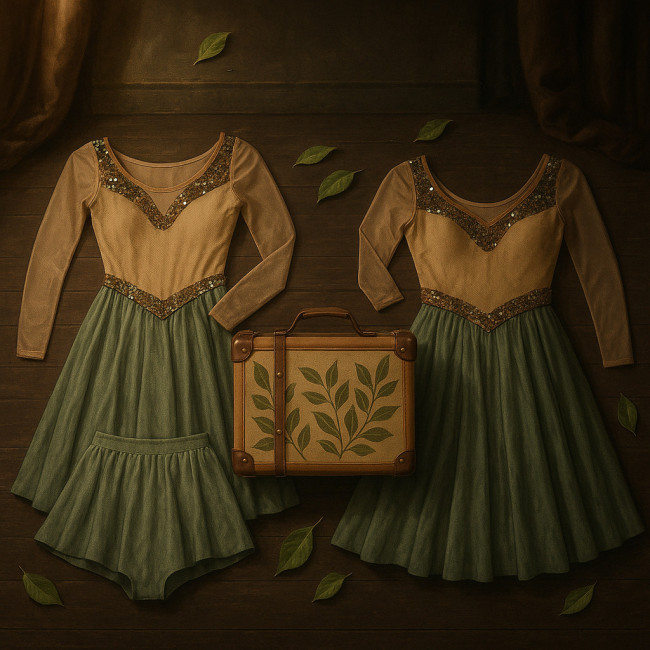Eco-friendly costume planning for touring dancers that cuts costs for producers
Looking to slash wardrobe expenses without compromising artistic sparkle? This guide shows you how to design, source and tour costumes sustainably — saving up to 25 % on materials, freight and upkeep while boosting your production's green credentials.
Why green costuming is a producer's secret budget lever

Costumes travel thousands of kilometres, endure fast changes and require frequent cleaning. Traditional fabrics and shipping habits generate hefty carbon footprints — and invoices. Moving toward eco-friendly solutions creates three immediate wins: lower material spend, lighter freight and a valuable public-relations story. By rethinking fabrics, packing methods and cleaning routines from the sketch phase through to the final curtain, producers unlock a cascade of micro-savings that compound across an entire tour, proving that sustainability can be both artistically vibrant and financially decisive.
A five-step workflow to build a low-impact touring wardrobe
1. Audit what you already own
Start by mapping every garment, accessory and shoe. Note fabric composition, condition and versatility. You'll often uncover 20–40 % of the next tour's wardrobe hiding in storage.
2. Define sustainability and aesthetic goals
Agree on measurable targets — for example: “75 % of new pieces made from certified recycled or natural fibres” and “one costume capsule per principal dancer to limit freight to two trunks.” Tie each goal to the production's storytelling palette and the professional theatre dancers directory profiles you intend to cast so fittings stay on-brand.
3. Source materials the smart way
Swap virgin synthetics for options such as:
- Certified recycled polyester mesh for breathable inserts.
- TENCEL™ lyocell for fluid skirts that drape like silk.
- Dead-stock sequins re-embroidered onto new bases.
Need more supplier leads? Check our deep dive on eco-friendly costume sourcing to compare certification labels and bulk-order minimums.
4. Collaborate with flexible makers
Large ateliers are not your only option. Interview agile independents able to prototype digitally and ship flat-packed samples. Use the vetting checklist in qualifying freelance clothing designers to confirm timelines, style alignment and revision policies.
5. Lock logistics early
Book consolidated transport and choose water-free dry-cleaning providers near each venue. Our guide to greener dance tours explains how to bundle wardrobe, set pieces and props into one carbon-offset shipment.
Negotiating contracts that protect your wallet and the planet
Rental versus purchase
For short runs, renting specialty garments (e.g., period corsets) can cost 40 % less than buying. Include a “wear-and-tear buffer” clause to avoid surprise penalties.
Performance-ready prototypes
Ask designers to deliver a performance-ready sample, not just toile. This lets dancers test sweat-absorption and freedom of movement early, cutting costly last-minute fixes. Use directories to source sustainable designers fast who already understand stage constraints.
Repair & refresh retainer
Bundling on-tour alterations into the original contract is 25 % cheaper than separate emergency calls. Negotiate remote video support for quick fixes between cities.
Logistics & care: keeping wardrobes light and long-lived
Packing hacks
- Roll stretchy pieces; flat-fold structured bodices with acid-free tissue to avoid extra boxes.
- Vacuum-seal non-embellished layers to shrink volume by up to 60 %.
- Colour-code garment bags for rapid backstage retrieval, reducing sweat-induced washing cycles.
Eco cleaning on the road
Switch from solvent dry-cleaning to CO2 or wet-cleaning systems where possible. These methods cut chemical fees by 10–15 % and extend fabric life.
End-of-life strategy
Plan donation, resale or up-cycling routes before opening night. Some textile recyclers offer discount pickups when you schedule in advance.
Budget snapshot: traditional vs. eco-smart planning
| Cost centre | Traditional approach | Eco-smart approach | Savings |
|---|---|---|---|
| Fabric purchase (20 looks) | €12 000 | €8 800 | €3 200 |
| Freight (4 trunks) | €3 500 | €2 100 | €1 400 |
| Cleaning (8 weeks) | €1 600 | €1 200 | €400 |
| Emergency repairs | €900 | €450 | €450 |
| Total | €18 000 | €12 550 | €5 450 (-30 %) |
Figures derived from mid-scale European tour averages in 2023–2024.
Quick self-test: are you ready to green your wardrobe?
FAQ
- Do sustainable fabrics hold up to intense choreography?
- Yes. Modern recycled blends pass the same abrasion and stretch tests as virgin synthetics. Always request lab results or stage-test samples during rehearsals.
- How early should I book green materials?
- Order at least 10 weeks before the first fitting. Certified textiles often have longer lead times, especially if you require custom dye lots.
- Will venues pay more for an eco-friendly show?
- Many theatres now allocate marketing funds for sustainable productions. Highlight your carbon savings in the tour pack to negotiate co-promotions or reduced rental fees.
- Is renting costumes really cheaper?
- For specialty items worn fewer than six times, rentals average 40 % lower total cost, including cleaning, than purchasing and storing new pieces.
- How do I recycle embellished pieces?
- Separate metal hardware and donate intact sequins to craft co-ops. Remaining fabric can join fibre-to-fibre recycling streams that accept mixed materials.
Ready to outfit your cast sustainably and economically? Start drafting your green wardrobe brief today and watch savings pile up before opening night.











